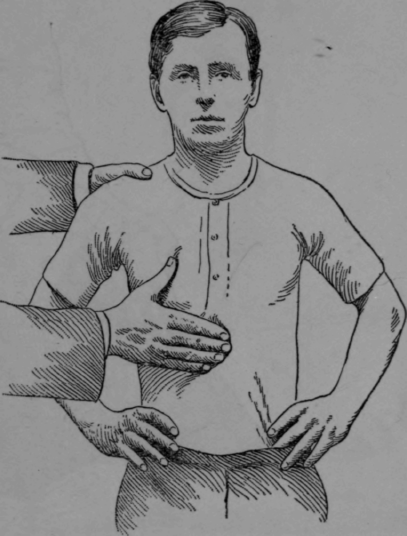A cacophony of twitches
In my first couple of years of tango, just learning how to lead was such a complicated thing. There was so much going on that I was so wrapped up in the whole experience. I kept at it, thinking that I was making progress.
One day, Mr. Ampster was honest enough to point out my affliction—Noisy dancing. We took a video of ourselves, and of each other dancing with other partners as a means of diagnosis.
Much to my chagrin, I saw what she meant. My shoulders bounced and rolled with the beat. My left arm tried to steer my partner's right arm like a boat rudder. My right arm hooked my partner by the arm pit, trying to lift her into turns. I bounced on my knees in a "Foxtrot" kind of way .
What I (then) believed to be "Expressing myself to the music" amounted to (what looked like) nervous twitches. Knowing this, I realized that it could have a lot to do with my partners' not getting what I was trying to lead. It was not my partners—it was me. I was sending out too much "Noise." So much noise that what I was (really) trying to lead was getting lost in the cacophony.
Adjustment in technique
Dancing "Noisy" in open embrace is bad. Dancing "Noisy" in close embrace is worse as the close proximity magnifies the dissonance. I had to make adjustments.
- Isolation and Dissociation
- The upper body has a different function from the lower body
- I had to work on the ability to keep my upper body upright, with my lower half moving independently. Its like dancing the "The Twist." I had to include limbering and stretching exercises
- Lower half is for the floor, Upper half is for your partner
- My upper half (Center) needs to stick to my partner. It has to be calm and quiet, yet resolute. It is the part of me that my partner needs to feel in order to get the lead
- My lower half needs to be grounded to the floor. It's my anchor on each step that needs to be planted before my upper body moves
- I am a tango dancer, not an orchestra conductor
- An orchestra conductor waves and pumps his arms to the rhythm and beat of the music. I (on the other hand) am a tango dancer. I stopped using arms and shoulders from expressing rhythm and beat. The combination upper and lower body is my expression
- Control
- An exercise in tension and relaxation. I had to improve my muscle tone from my arms to my legs. It was very difficult to walk smoothly, legs planted (grounded) to the floor on every step, with my upper body leading. It took me a year (or so) to get to a point where I was confident.
A symphony of impulses
- The resolute center
- I cannot emphasize enough of what my teachers have taught me. The lead comes from the center—That area in and around my solar plexus. Its the spot that directs your partner to go forward, backward, side, go, stop, slow, fast. Without using the center, my dance feels cold and hollow
- Driving legs
- The legs plant, while moving the upper body forward in the direction you want to go
- Micro leads
- Many, many people have said that you can dance a tango without using arms. You just use your chest. Much like life, this rule (IMHO) has it's exceptions. I for one can't do it. As in life I had to make compromises. I call them "Micro leads."
- I use muscular impulses (i.e. Relaxing, tensing, gentle pulses) to help signal my intensions. I tense up my upper body to say... "We're slowing." I suddenly loosen up to say... "We're moving forward." I become stiffer, then relax on the right as I swing my upper body to say... "Ocho."
- Balance of execution
- The hard part of my micro leading is to be smooth and subtle. I need balance. Too much (impulses) will become distracting for my partner. Too little and I may not be able to convey my desires. It becomes an exercise in execution that can only be done via trial and error.
It seems that the more I grow in tango, the more I find things to work on. The only constant I find is mastering the basics. All of the stuff that I just talked about is part of refining the basics to make the dance my own.
